Newsletter
The WELL Standard is one of the world’s most popular healthy building programs around the world.
Designed to optimize the comfort and safety of building occupants, the WELL Standard is a rigorous certification that pushes for a healthier future. Projects must earn over 80 points to earn the highest rating offered by the WELL Standard: WELL Platinum.
Today, we’d like to discuss ten noteworthy projects that have been certified by WELL at different levels, including seven Platinum-certified buildings. Each project we included on our list has a noteworthy attribute, whether for sheer size or being a WELL “first.” We hope these examples inspire you to launch your own healthy buliding initiative sooner rather than later!
Explore additional WELL resources:
San Francisco International Airport (Platinum Certified)
The San Francisco International Airport (SFO) is now the healthiest airport in the world. Its new Harvey Milk Terminal 1 is the first airport terminal to achieve WELL Core Certification at the Platinum level.
However, for SFO, WELL certification isn’t the only achievement. The airport holds an unprecedented Triple Platinum distinction, with certifications in WELL Core, LEED BD+C, and LEED for Communities — all at the Platinum level. Beyond certifications, SFO is also setting a new standard in airport sustainability with ambitious Triple Zero goals: net-zero energy, zero waste, and carbon neutrality.
As part of its mission to prioritize occupant health and well-being, SFO has also launched the first large-scale, high-density IAQ monitoring project in an airport setting. This initiative uses real-time sensors to monitor indoor and outdoor air side-by-side, identify sources of pollution, and optimize ventilation, ensuring that every passenger and employee breathes healthy indoor air.
 Image via wellcertified.com
Image via wellcertified.com
Three Garden Road, Hong Kong (Platinum Certified)
Three Garden Road, owned by Champion REIT, was the first existing building in Hong Kong to receive a WELL Platinum certification.
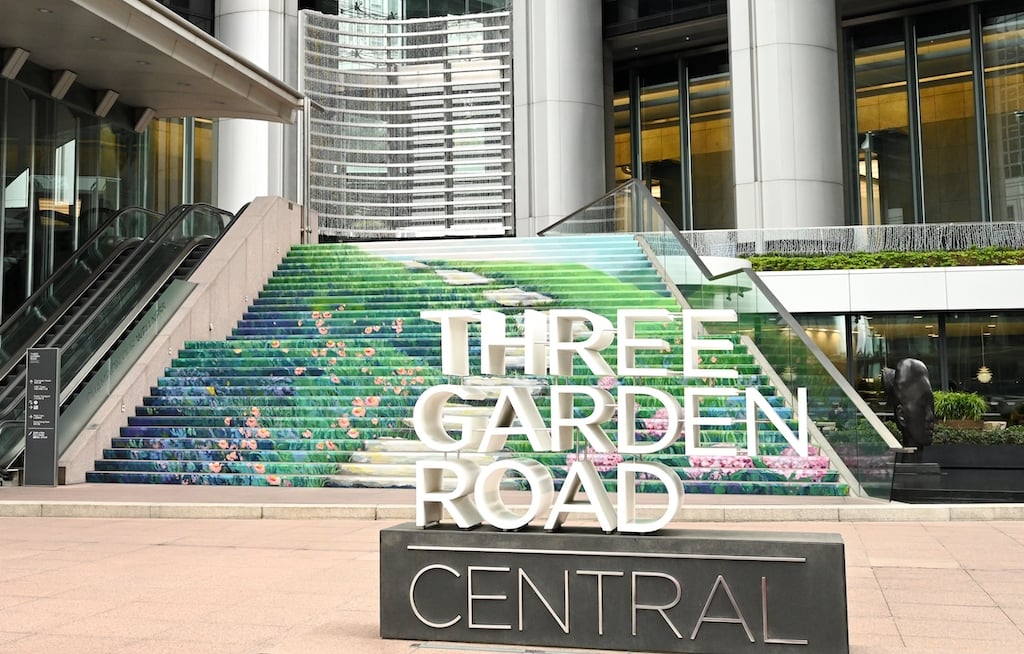
Image via championreit.com
Certified in 2020, Three Garden Road is an office complex located in the central business district of Hong Kong, a bustling center of international commerce. Three Garden Road is one of the largest projects certified by WELL, totaling over 1,600,000 ft². The project features many wellness-focused programs, including a fitness center, classical music concerts, healthy dining and snacking options, and a garden.
International Towers, Australia (Platinum Certified)
Another sizeable entry on our list, International Towers in the Barangaroo area in Australia were certified Platinum as a WELL v1 Core & Shell project in 2018. Composed of three towers, International Towers stretch the central business district of Sydney down to the waterfront.
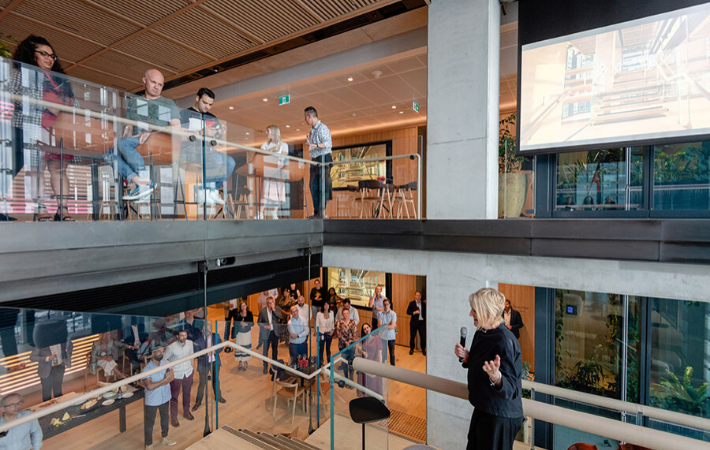
Image via internationaltowers.com
International Towers are now known as “Australia’s Most Progressive Workplace,” combining environmental efforts with wellness opportunities. The project took a comprehensive, modern approach to healthy building, implementing key initiatives from each of WELL’s seven categories.
IWBI NYC Headquarters, USA (Platinum Certified)
Our next entry is an unusual one. After all, it’s not often that the organization is certified by its own standard.
The International WELL Building Institute, the organization behind the WELL Standard, is headquartered in New York, New York. Their global office received a WELL Platinum certification in 2019, after relocating to an aging building along Madison Square Park.
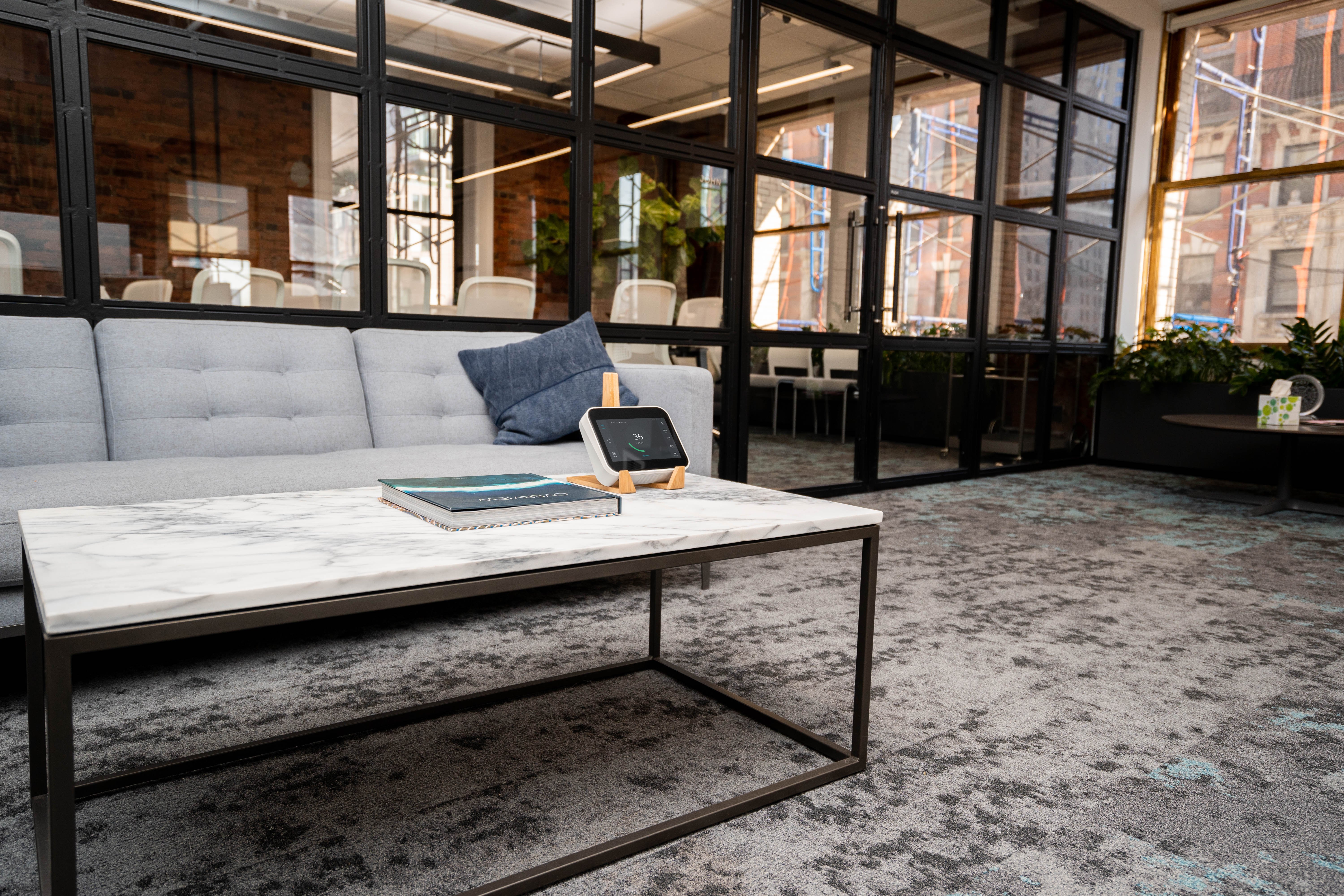
Note: The values displayed don’t reflect true air quality readings in IWBI’s NYC headquarters.
The building, originally built in 1913, had unique challenges for the design team, COOKFOX, to overcome, including noise and thermal comfort issues. By earning WELL Platinum with a vintage retrofit, IWBI proved that the WELL Standard is accessible for everyone.
Okta Global Portfolio (Silver Certification)
With more than 12 locations around the world pursuing WELL certification at the silver level, Okta is forging a new path for WELL projects — one that leverages a more forward-thinking approach to meeting WELL’s requirements for performance verification.
From New York City to Paris to Tokyo, Okta’s global portfolio is in the process of installing the wireless Sensedge Go IAQ monitors to completely replace on-site performance testing for the air concept. But that’s not all — these offices are not only avoiding the costs and complexities of performance testing, but they’re also unlocking new use cases for their real-time IAQ data that will make it easier than ever to maintain a high-performance, health-centric portfolio.
.jpg?width=1600&height=1200&name=IMG-20250414-WA0004%20(1).jpg)
CBRE Offices, Toronto (Silver Certified)
In an impressive feat, Commercial Real Estate Services (CBRE) certified all three of its Toronto offices at the same time - following on the heels of its Vancouver office which was certified in 2017.
CBRE’s offices include many design features focused on employee wellness:
- Natural sunlight is incorporated into the design of the building, and lighting levels are automatically dimmed based on natural light levels
- Sit-stand workstations for all employees
- Acoustic enhancements
- Water filtration
- Encouraging physical activity and foot traffic through the buildings
You can read additional details about CBRE’s WELL-certified offices here.
Phipps Center for Sustainable Landscapes, USA (Platinum Certified)
The Center for Sustainable Landscapes (CSL) is an overachiever in the realm of health and sustainable building. As well as earning the first WELL Pilot Platinum certification in 2014, CSL was the first and only building to receive five of the highest green building certifications. CSL currently holds the following ratings:
- WELL Platinum (Pilot)
- LEED Platinum
- Living Building Challenge (LBC)
- SITES Platinum
- BREEAM Outstanding In-Use
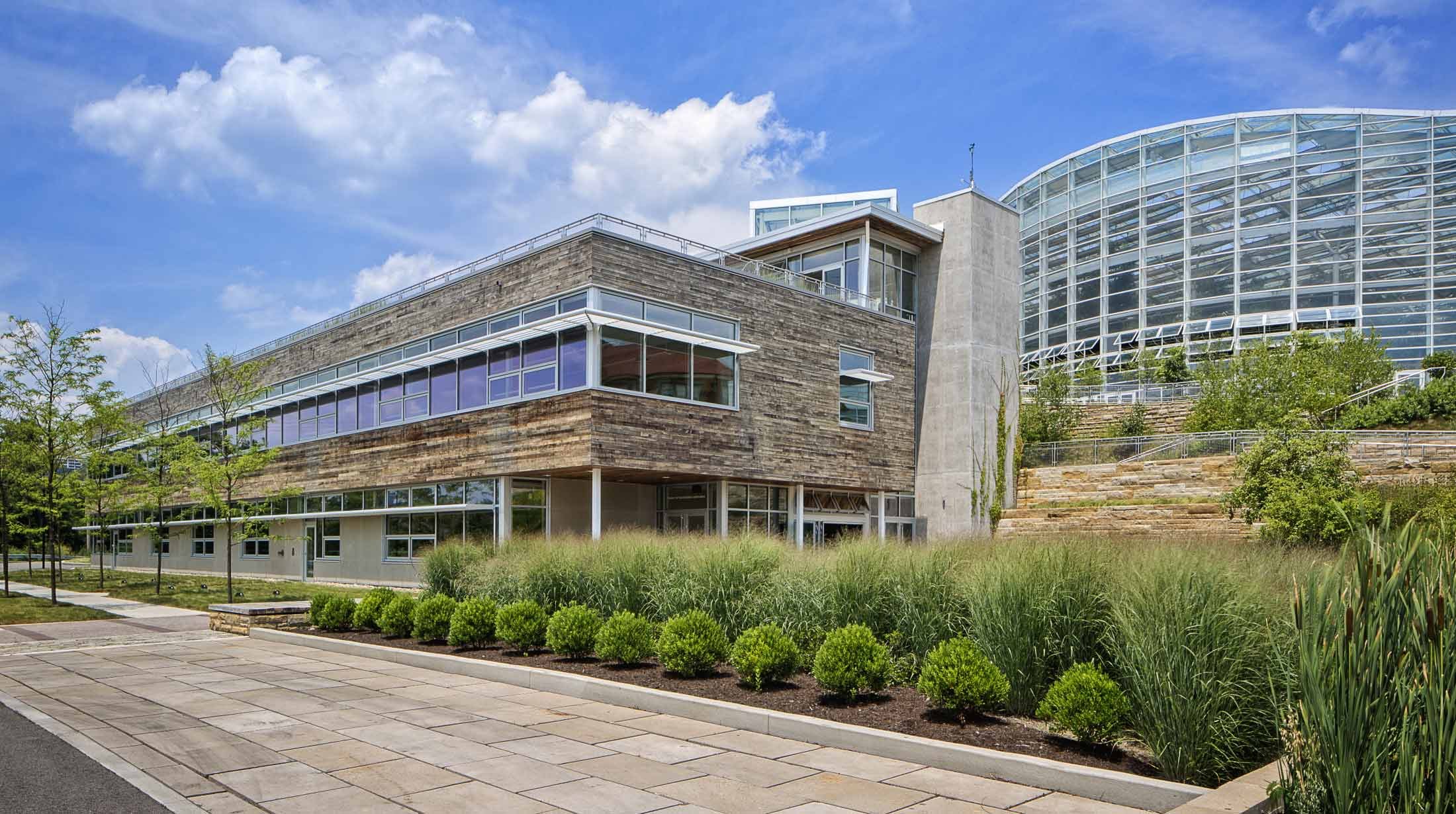
Image via phipps.conservatory.org
CSL was designed to bridge the gap between nature and the built environment, seamlessly blending biophilic elements into its interior and fitting its exterior into the surrounding environment.
Cundall Offices, London
The head offices of Cundall, an engineering company, were the first project in Europe to attain WELL certification. In order to meet 36 of the 102 features in WELL, Cundall paid meticulous attention to details such as lighting and material selection - ensuring that the VOC content of everything used, including paint, is close to zero.
Additional effort was invested in measuring and improving air quality, including through the use of plants to reduce reliance on ventilation; as well as thermal comfort improvements which were estimated to increase productivity significantly. The full case study is well worth a read.
ASID Headquarters, USA (Platinum Certified)
Located in Washington D.C., USA, the American Society of Interior Designers (ASID) headquarters office was the first project to be certified Platinum by both LEED and WELL v1. Demonstrating an exceptional dedication to both the environment and the health and safety of building occupants, ASID balanced energy efficiency and waste reduction with interior environmental conditions and wellness concerns.
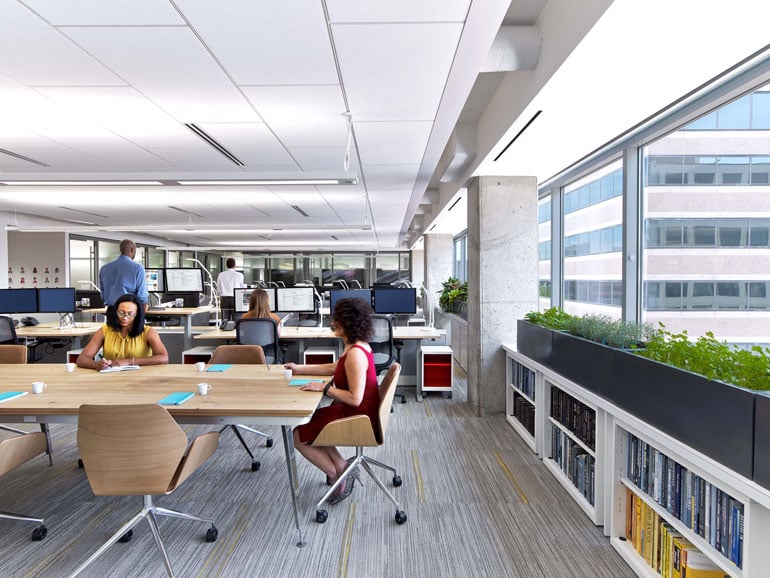
Image via asid.org
Maintaining the balance between efficiency and well-being is not easy, and required the out-of-the-box thinking and effort of the design team from Perkins+Will, as well as ASID and their team members. After the project was completed and certified in 2017, research from Cornell University found that overall job satisfaction increased, alongside boosts in satisfaction with the interior environment, perceived organizational productivity, and perceived organizational support.
EDGE Technologies Headquarters, Netherlands (Platinum Certified)
No stranger to the WELL Standard, EDGE Technologies was the first organization to receive a Platinum rating under WELL v2 for their headquarters in Amsterdam.
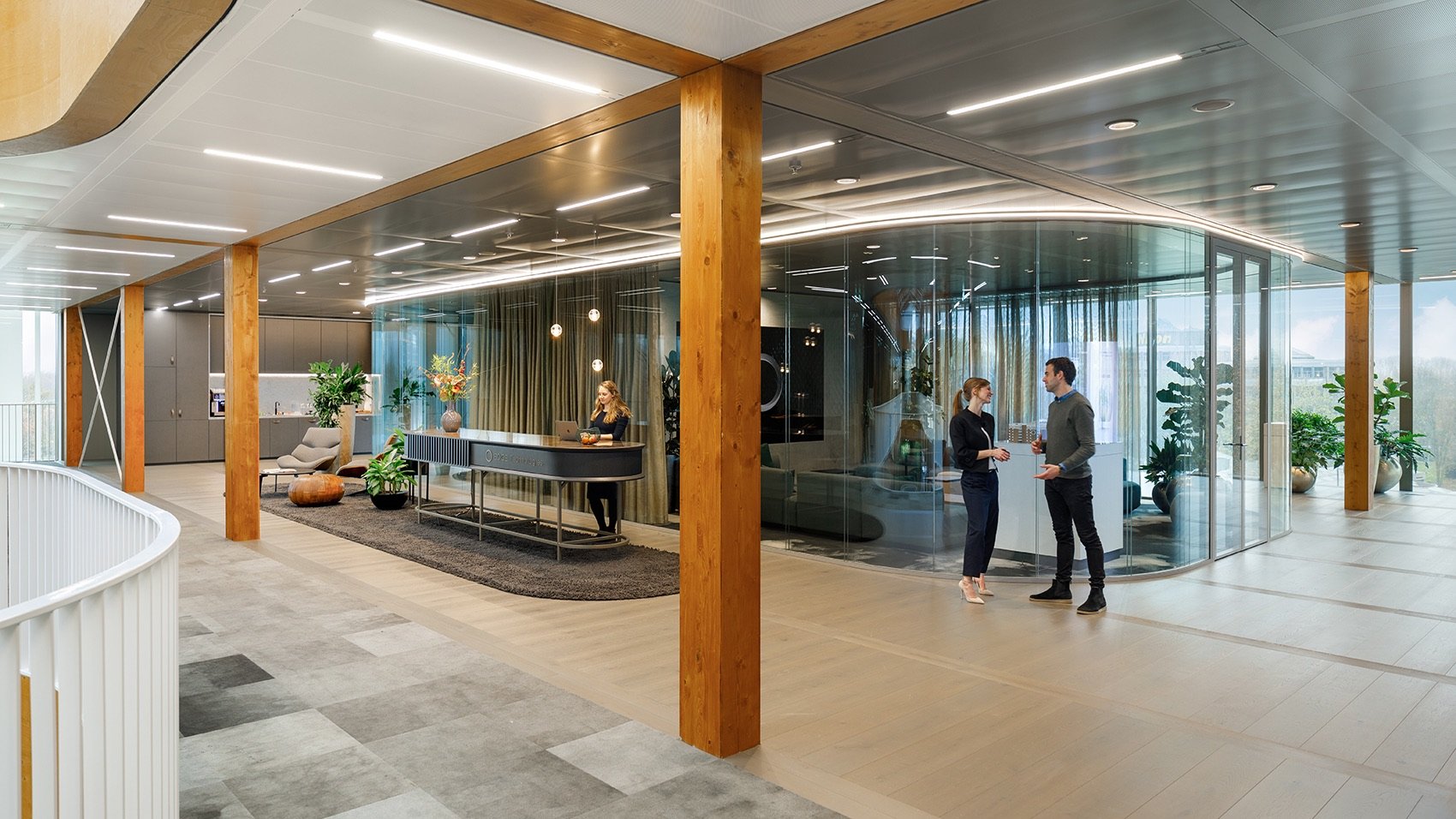
Image via edge.tech
EDGE Technologies used a combination of healthy working options, including fitness opportunities for employees, low VOC-emitting building materials, and varied meeting places. EDGE Technologies also utilized other approaches, such as the addition of a meditation room and optional bi-weekly massages or naps.
One crucial element of every WELL project is office air quality. Read more below to find out how commercial air quality monitoring can earn you points toward a WELL certification.






.png?width=200&height=148&name=Menu%20C%20(2).png)

.png)





